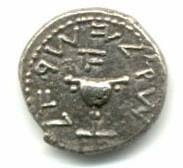As I await my new/used Detroit PD Glock 22 to arrive at my friendly neighborhood FFL, and given Lagniappe's Keeper's positive review of it, I'm looking forward to it.
I already have a couple Glocks, one of which now has a Crimson Trace Lasersight on it.
For quite some time I was skeptical of laser sights on firearms, considering them a gimmick and unnecessary. But I had the opportunity as an NRA instructor to obtain one for a discount as a training tool and decided to see what the pros and cons were for myself.
Installation was quite simple and the assembly instructions easy to follow. The sight comes with a Glock disassembly tool that is embossed with the Crimson Trace logo. One pin is removed from the rear of the frame and the lasergrip is slid into place and a pin supplied with the sight locks it in place.
Once installed it is activated by simply holding the firearm as the switch is in the rear of the grip.
The downside to this arrangement is that together with no off switch, the laser is on every time you hold the gun in a firing grip. You can cover the laser port with your finger to block it while holding it but it doesn't work as nicely as a dedicated off switch. The laser of course has two points of light - from the emitter on your firearm and on your target.
The other downside to the sight was the zeroing instructions. They were quite unclear as to which adjustment socket adjusted vertical as opposed to horizontal positioning of the laser, not to mention which direction you turned the adjustment screw with the supplied mini Allen keys moved the direction of the point of impact. It took a bit of fiddling to get it on target for as supplied it would hit the 7 ring to the right and high when lasing the x ring at 7 yards -- way, way off in other words. Now after multiple rounds spent zeroing, it is right on target.
The benefits - very quick target acquisition and amazing accuracy. With the laser new zeroed and placed on the X, 5 shots hit the X with all rounds touching each other - quite impressive. Target-focused shooting is simple indeed -- put the laser on the target, practice good trigger control and the target is hit. The laser works great indoors and at night. Outdoors during the day the laser washes out after a relatively short distance.
The laser has also been helpful teaching students trigger control and sight alignment - have them shoot without it, explain why they are missing what they are aiming at by jerking the trigger, then let them use the laser to practice trigger control. The same goes for sight alignment. There was an immediate improvement even after using the lasergrips when they went back to the non-laser sighted firearm. You can tell someone what they need to do to improve but when you show them, and then they can immediately try it themselves, it makes learning a lot quicker.
The lasersight also makes a great kitten play toy, as Sabrina ran all over following the little red dot tonight when I got back from the range. Lots of kitten fun.
I strongly advise removing the slide entirely from the gun if you use the laser in this manner. It still works well as a laser this way and you avoid the possibility of a cat-astrophe. A cat only laser is now on the shopping list.
Lasersights are another tool in your defensive toolbox, not a cure-all nor perfect for all situations, but definitely an excellent tool that does have a place on a defensive handgun for self defense. Given the ease of installation and use of the Crimson Trace Lasergrips, I'd recommend them.

Sunday, November 15, 2009
A Glock and Crimson Trace Lasergrips - A Great Combination
Subscribe to:
Post Comments (Atom)

No comments:
Post a Comment